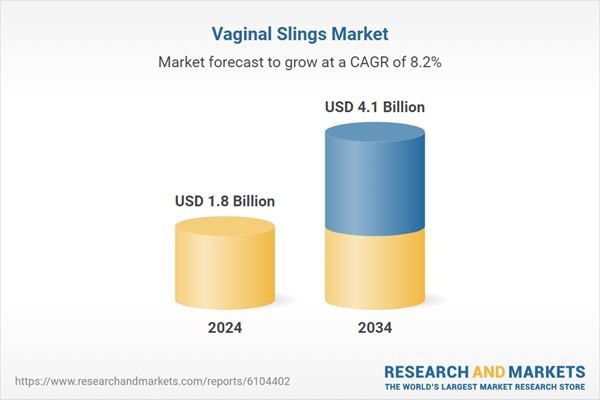Additionally, technological progress in sling design, such as absorbable and lightweight materials, has improved procedural outcomes and patient satisfaction. The shift toward outpatient procedures, which offer cost-effectiveness, shorter recovery times, and high-quality care, is also boosting overall adoption across healthcare settings. Demand for minimally invasive and patient-friendly procedures continues to shape product development and influence consumer choices across the industry.
The transobturator slings segment led the market in 2024, reaching a valuation of USD 739.2 million. This method offers a safer alternative by avoiding critical vascular and nerve zones, thereby reducing complications. By bypassing the retropubic area, these slings minimize trauma while delivering effective support. Their increasing adoption is linked to improved safety, ease of placement, and favorable patient outcomes. Many manufacturers have refined their product designs to accommodate these requirements, contributing to higher segment growth and user trust.
In 2024, stress incontinence held the largest share at 41.2% of the vaginal slings market. The growing elderly population, particularly women, faces higher risks of pelvic floor weakening, which often results in stress urinary incontinence. With millions of adult females affected in the U.S. alone, this condition presents a significant healthcare burden.
Vaginal slings offer a reliable and effective treatment for managing these symptoms in aging demographics. Rising awareness surrounding women’s urological health, particularly conditions like painful bladder syndrome, has further accelerated scientific research and product innovations targeting incontinence-related issues. As a result, the demand for tailored, safe, and efficient treatment options like vaginal slings continues to rise.
U.S. Vaginal Slings Market was valued at USD 396.8 million in 2024. The market is experiencing steady growth driven by the rising number of women - particularly in the aging population - affected by stress urinary incontinence (SUI). Heightened awareness around pelvic health, along with increased access to specialized urogynecology centers, has encouraged more women to pursue treatment for urinary incontinence. Contributing factors such as obesity, childbirth, and menopause continue to raise the incidence of pelvic floor disorders, leading to higher demand for surgical interventions like vaginal slings.
Advancements in sling materials and the adoption of minimally invasive surgical techniques are improving procedural efficiency, shortening recovery times, and enhancing overall patient satisfaction, all of which support market expansion.Additionally, strong healthcare infrastructure combined with favorable reimbursement policies is further propelling market growth across the U.S.
Leading companies active in the Global Vaginal Slings Market include: UroCure, A.M.I., Betatech, Coloplast, UNISUR, Boston Scientific, ADLER, Promedon, CALDERA MEDICAL, Johnson & Johnson, COUSIN SURGERY, neomedic international, LOTUS, and B. Braun. To strengthen their position in the vaginal slings market, key players are focusing on a mix of innovation, accessibility, and global outreach.
Many companies are enhancing product lines with lightweight, biocompatible, and patient-centric sling materials that support quicker recovery and reduce surgical complexity. Strategic collaborations with healthcare institutions and surgeons help improve procedural adoption and product feedback. Firms are also investing in clinical trials and regulatory approvals to expand their geographic reach.
Comprehensive Market Analysis and Forecast
- Industry trends, key growth drivers, challenges, future opportunities, and regulatory landscape
- Competitive landscape with Porter’s Five Forces and PESTEL analysis
- Market size, segmentation, and regional forecasts
- In-depth company profiles, business strategies, financial insights, and SWOT analysis
This product will be delivered within 2-4 business days.
Table of Contents
COMPANIES MENTIONED
The companies featured in this vaginal slings market report include:- ADLER
- A.M.I.
- B. Braun
- Betatech
- Boston Scientific
- CALDERA MEDICAL
- Coloplast
- COUSIN SURGERY
- Johnson&Johnson
- LOTUS
- neomedic international
- Promedon
- UNISUR
- UroCure
Table Information
| Report Attribute | Details |
|---|---|
| No. of Pages | 120 |
| Published | June 2025 |
| Forecast Period | 2024 - 2034 |
| Estimated Market Value ( USD | $ 1.8 Billion |
| Forecasted Market Value ( USD | $ 4.1 Billion |
| Compound Annual Growth Rate | 8.2% |
| Regions Covered | Global |
| No. of Companies Mentioned | 15 |









